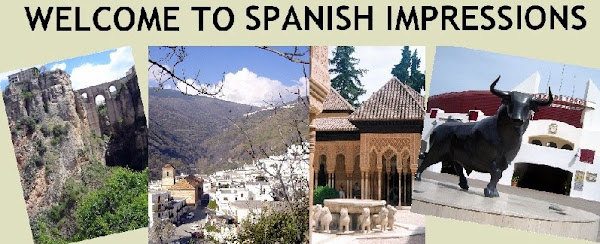by Robert Bovington
Roquetas de Mar is a coastal town in the province of Almería. It is rapidly developing into one of the most attractive seaside resorts in southern Spain. It is popular with Spanish holidaymakers but increasing numbers of Northern Europeans are choosing to visit. Some, like yours truly, have decided to live here.
Roquetas does not have the brash, mass tourism of other Spanish resorts. Life here moves at a much gentler pace but is far from boring. All along the Spanish coastline and in the inland villages there are frequent celebrations to honour various patron saints. Roquetas is no exception. It has a number of festivals during the year. The most important celebration being in honour of the Virgen del Carmen and Santa Ana that takes place every July with a maritime celebration. During the summer months, Roquetas Town Council puts on numerous open-air concerts. These performances cater for all tastes including as they do flamenco, pop, jazz and classical music as well as shows for children. Entrance is free. There are occasional free concerts at the theatre that opened around three years ago. However, we do have to pay to see artists like Montserrat Caballe and Jose Carreras who have appeared there.
The town of Roquetas de Mar used to be a fishing village and the area around the old port is particularly attractive with a sensitive mix of new apartment blocks and old fishermen's houses. Adjacent to the port area is the Castillo Santa Ana, which was built on the site of the old castle. It is currently used as an exhibition centre but rumour has it that it will, in future, be the home of the Roquetas Museum of the Sea. Next to the castle is the old lighthouse.
The resort has several miles of sandy beaches, all with blue flag status. It stretches from Aguadulce in the east to the Natural Park of Puntas Entinas-Sabinar in the west. In between are the districts of Las Salinas, Roquetas old town and the Urbanización.
The up-and-coming Las Salinas area of Roquetas is set on the vast plains of salt flats at the foot of the Sierra de Gádor. The main tourist area is called the Urbanización de Roquetas de Mar. Its attractive promenade is fringed with palm trees. There are a number of British and German hostelries but they intermingle with Spanish ones. Aguadulce is part of the municipality of Roquetas de Mar but is a separate but equally appealing resort with a fine marina. I like driving along the coastal road from Aguadulce to Almería. It is a spectacular drive with the mountainside on one side and sheer drops to the sea on the other. The road hugs the cliff tops and passes through tunnels that have been excavated in the rock face.
There is one thing that scars this area of Andalucía and it is a rather large blemish at that. It is the vast ocean of plastic that exists around the town of Roquetas and which extends for many miles to the west, through the Costa Tropical, as far as the eastern Costa del Sol near Nerja. These plastic covered greenhouses, despite their less than attractive appearance, have brought wealth and prosperity to the peoples of these parts. Crop growing is a thriving business in this area, and the province of Almería supplies a large proportion of the fruit and vegetables that are to be found on the shelves of supermarkets around Europe. This is especially true of the winter yield when the harvest from the rest of Europe is low.
Despite the close proximity of the greenhouses, there are some delightful natural areas just a short drive from Roquetas. The Cabo de Gata Natural Park is less than one hour's drive from Roquetas. The cape itself is visible across the bay and beyond that there are the unspoilt beaches and unique wildlife of the protected coastal reserve. It is also only an hour's drive to the Alpujarras – that delightful area of picturesque white villages that cling to the southern slopes of the Sierra Nevada. It is but half an hour's journey if one accepts that the mountain village of Enix is, in fact, part of that delightful region made famous by authors Gerald Brenan and Chris Stewart. Certainly, on arriving at the village in the Sierra de Gádor there is a sign welcoming visitors to the Alpujarra Almeriense.
As far as I am concerned it is just one of the delightful mountain villages to visit whenever I wish to go for a short drive from the coastal resort of Roquetas de Mar which, incidentally has over 300 sunny days per year. No wonder the welcoming signs in Roquetas say "Roquetas de Mar también en invierno" - also in winter!
more blogs by Robert Bovington...
"Photographs of
|
|
"postcards from
|
|
"you couldn't make it up!"
|
|
"a grumpy old man in
|
|
"bits and bobs"
|
|
"Spanish Expressions"
|
|
"Spanish Art"
|
|
"Books About
|

.JPG)